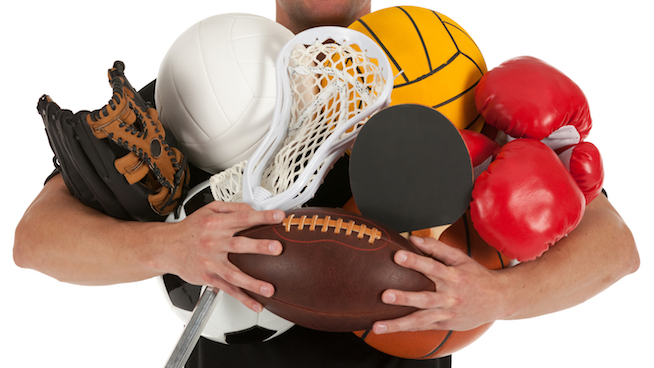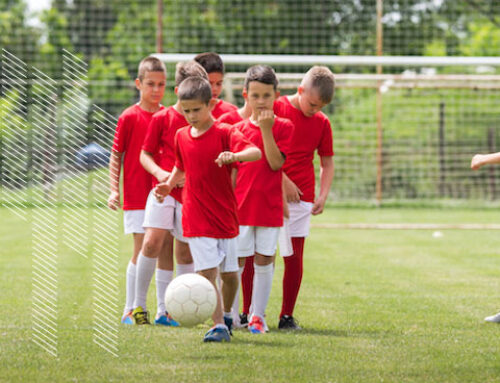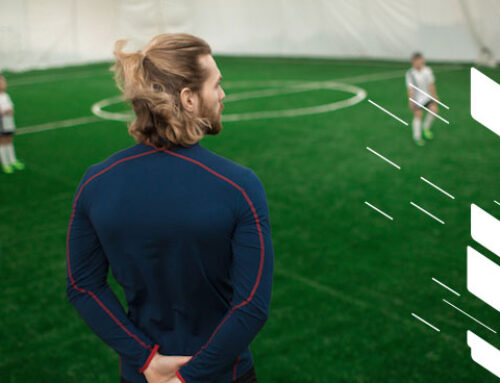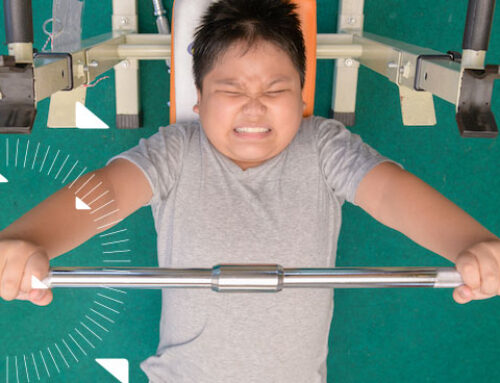By Brandon Hall
We love multi-sport athletes here at STACK.
Why?
The same reason college coaches prefer recruiting them—in general, multi-sport athletes tend to be more resilient, athletic, coach-able and competitive than their single-sport counterparts. And the earlier kids specialize, the wider these gaps tend to become. Early specialization does not increase a youth athlete’s odds of eventually playing collegiately or professionally (in fact, the opposite seems to be true), but it does greatly increase their risk of overuse injury and burnout.
So playing multiple sports, particularly during an athlete’s pre-adolescent and early teenage years, is good. However, playing multiple sports during the same season is a much more perilous endeavor. If it’s something a young athlete wants to take on, they should think long and hard about the potential ramifications of that decision.
First off, consider the workload. While some athletes are able to make an arrangement where they can keep the workload of a second sport to a minimum—such as a baseball player who occasionally shows up to track & field meets to compete in a throwing event, or a soccer player who also kicks field goals for the football team—taking on the full or nearly full workload (games, practices, training, etc.) of two sports simultaneously can lead to some serious issues.
Namely, physical and emotional burnout. Rest and recovery play an incredibly important role in athletic performance, and when they are minimized, performance suffers. There’s a reason NBA teams tend to fare worse on the second night of back-to-back games. When you attempt to squeeze two sports into the same season, you’re essentially living in a never-ending back-to-back. That takes both a physical and a mental toll on an athlete, and the end result may be playing less than their best in both sports.
Taking on two sports in the same season also leaves very little time and energy for in-season strength training, which can exacerbate the issue and result in the athlete being weak and rundown for crucial late-season and post-season contests.

Young athletes also struggle to consume enough calories when playing one sport at a time, so putting two sports on their plate simultaneously makes it that much tougher.
Roberta Anding, former Director of Sports Nutrition at the Houston Children’s Hospital and current Sports Dietitian for the Houston Astros, says, “Young athletes struggle with getting enough calories. Since they’ve also got growth and development, their calorie requirements are much higher.”
According to the Food and Nutrition Board of the Institute of Medicine, male high school athletes need between 3,000 and 6,000 calories a day, and female high school athletes need between 2,200 and 4,000 calories a day. For an athlete playing two sports at one time, those totals are likely significantly higher. And what happens when you don’t consume enough calories and protein to support your activity levels? You lose weight. And for young athletes, that weight loss will often come via their body cannibalizing its own muscle mass for fuel.
Playing two or more sports simultaneously also effectively doubles the amount of travel an athlete faces that season, resulting in a ton of early mornings and late nights. Not only will this make studying and completing homework more of a challenge, but it will also likely reduce the amount of sleep the athlete can achieve. Research has found insufficient sleep significantly decreases measures of athletic performance such as sprint speed and basketball shooting accuracy while also increasing risk of injury. An abstract presented at the 2012 American Academy of Pediatrics National Conference found that adolescent athletes who slept eight or more hours each night were 68% less likely to be injured than athletes who regularly slept less.
Not to mention the uncomfortable dynamics that could arise between athlete, coach and teammates on topics like playing time, missed games, missed practices, missed meetings, etc. that are sure to arise when one competes in two sports with overlapping seasons.
Have there been athletes who’ve made it work? Absolutely. But the additional challenges playing two sports simultaneously can add to an already busy student-athlete schedule should not be underestimated. While it’s true many college coaches prefer recruiting multi-sport athletes, playing two sports in the same season to the detriment of your athletic and academic performance is losing sight of the forest for the trees.
The National Federation of State High School Associations sums up the concerns well in this article:
Is the student-athlete mature and responsible enough to handle this increased level of commitment? Keep in mind only being able to play part-time in both sports might actually lead to bigger problems, especially with respect to playing time fairness and team dynamics. Does the student-athlete fully understand the complications and consequences that might be involved with this decision, especially as it applies to other potential missed opportunities and potential struggles to keep up with studies?…Is the student-athlete aware of the increased chances for physical injuries and sports burnout because of playing more than one sport at the same time?
As the benefits enjoyed by multi-sport athletes become increasingly clear, it’s important to discuss the safest and smartest ways to go about participating in multiple sports. While select athletes have pulled it off in the past, competing in two sports in the same season brings about a series of potential issues that should not be downplayed. However, if an athlete does want to take on this unique challenge and they have the support necessary to pull it off, we wish them the best of luck. It’s simply a situation where the potential drawbacks outweigh the benefits for most, but not all, young athletes.
Photo Credit: 4×6/iStock
READ MORE:







Leave A Comment
You must be logged in to post a comment.